


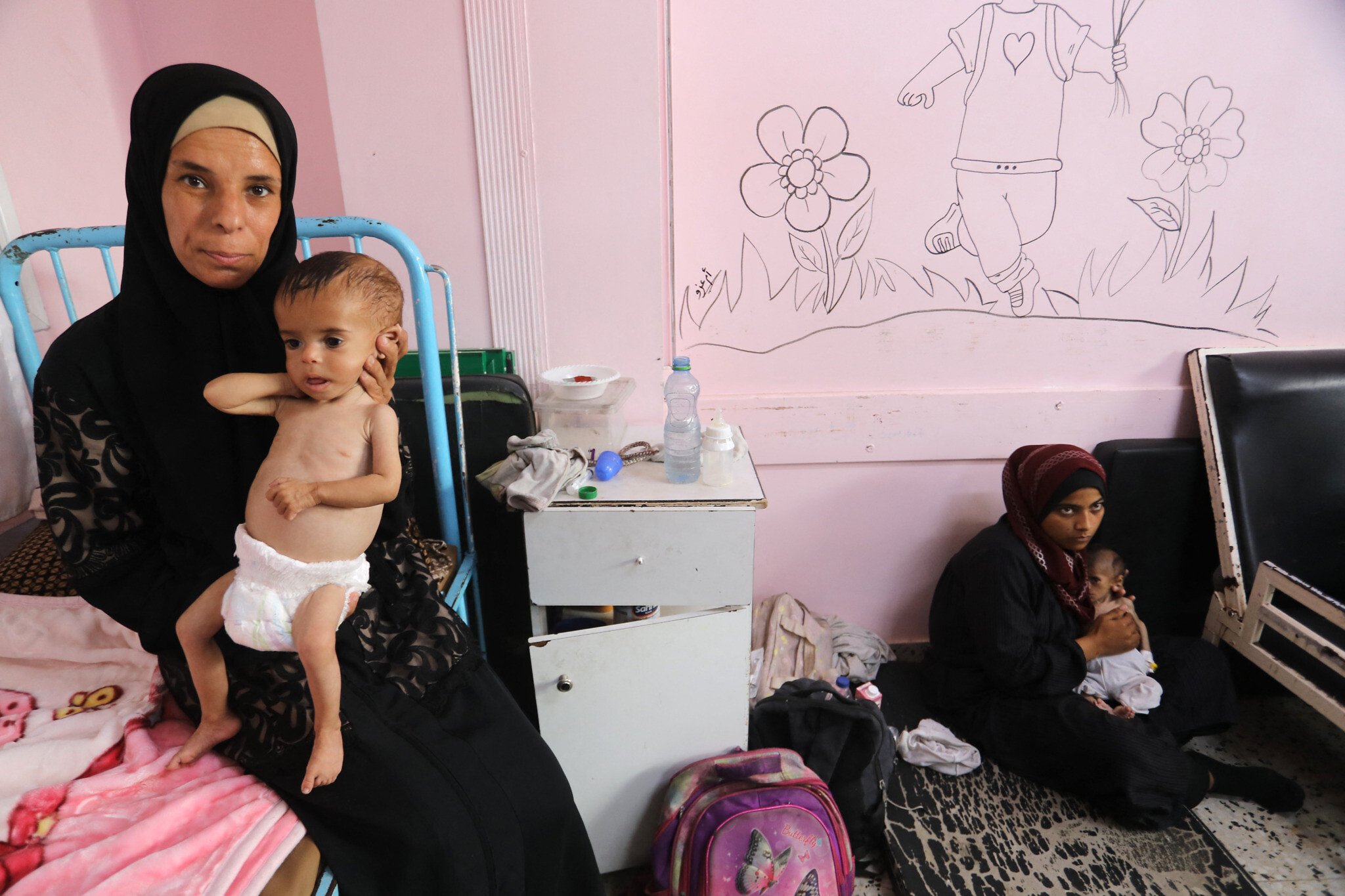
KHAN YOUNIS, Gaza Strip — On the pink walls of Nasser Hospital’s child malnutrition ward, cartoon drawings show children running, smiling, and playing with flowers and balloons.
Beneath the pictures, a handful of Gazan mothers watch over their babies, who lie still and largely silent, mostly too exhausted by severe hunger to cry.
The quiet is common in places treating the most acutely malnourished, doctors told Reuters, a sign of bodies shutting down.
“She is always lethargic, lying down, like this… You do not find her responsive,” said Zeina Radwan, mother of 10-month-old Maria Suhaib Radwan. She has not been able to find milk or enough food for her baby and cannot breastfeed, as she herself is underfed, surviving on one meal a day.
She added, “My children and I cannot live without nutrition.”
Over the last week, Reuters journalists spent five days in Nasser Medical Complex in southern Gaza, one of only four centers left in Gaza able to treat the most dangerously hungry children.
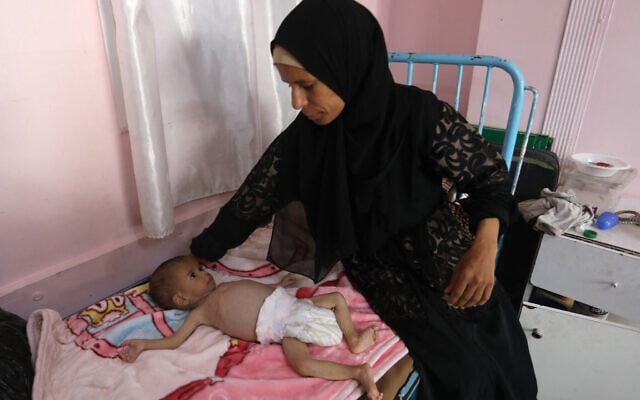
Gaza’s food stocks have been running out since Israel cut off all supplies to the territory in March as it resumed its war against Hamas, which began with the terror group’s attack on October 7, 2023. That blockade was partially lifted in May, but aid has fallen far short of need, and recently reports of starvation and of deaths from acute malnutrition have spiked in the enclave.
The World Health Organization has warned of mass starvation, and images of emaciated children have shocked the world. The Hamas-run Gaza health ministry says 151 people, including 89 children, have died of malnutrition, most in recent weeks. A global hunger monitor said on Tuesday that a famine scenario is unfolding.
At the same time, this week saw multiple cases in which photos of emaciated children in Gaza were called misleading, as the children had underlying health conditions. In the case of one image that has circulated widely, The New York Times acknowledged in an editor’s note that the child in the photo had “pre-existing health problems.”
Israeli officials say many of those who died while malnourished in Gaza were suffering from preexisting illnesses. Famine experts say this is typical in the early stages of a hunger crisis.
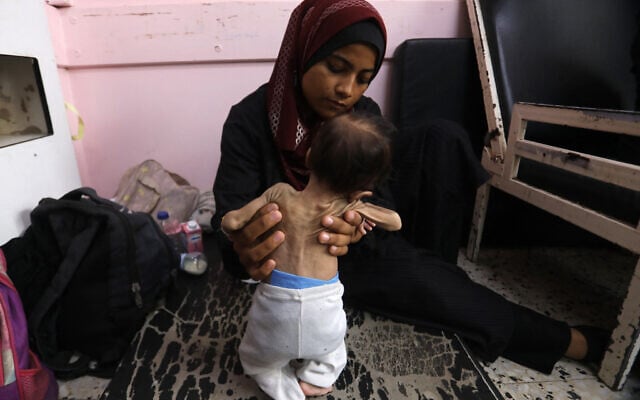
Prime Minister Benjamin Netanyahu has denied that there is starvation in the Strip, and Israel has said it let in large amounts of aid that the United Nations has failed to deliver. But in response to heavy international pressure, Israel announced several steps to increase the flow of food in Gaza, including airdrops and 10-hour “humanitarian pauses” in the fighting in three population centers.
The United Nations said the scale of what is needed is vast in order to stave off famine and avert a health crisis.
“We need milk for babies. We need medical supplies. We need some food, special food for the nutritional department,” said Dr. Ahmed al-Farra, head of the pediatric and maternity department in Nasser Medical Complex. “We need everything for the hospitals.”
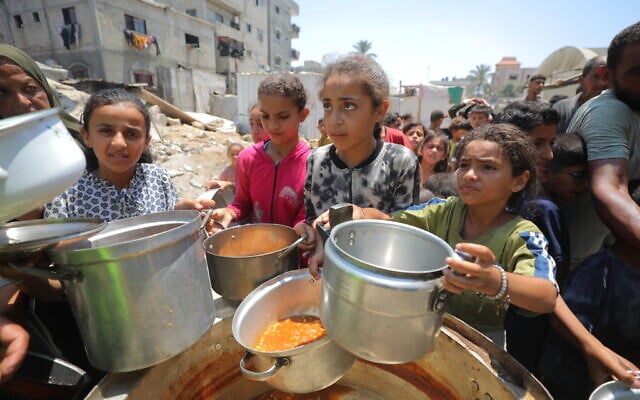
“Children with underlying conditions are more vulnerable. They get affected earlier,” said Marko Kerac, clinical associate professor at the London School of Hygiene and Tropical Medicine, who helped draw up the WHO’s treatment guidelines for severe acute malnutrition.
In a statement Monday, Netanyahu said Israel “will continue to work with international agencies, as well as the US and European nations, to ensure that large amounts of humanitarian aid flow into the Gaza Strip.”
He said Israel is already allowing significant amounts of food, water, and medicine into Gaza every day. He called the situation in Gaza “difficult” but added, “Hamas benefits from attempting to fuel the perception of a humanitarian crisis.”
US President Donald Trump has also expressed concern at the situation and skepticism of Israeli statements downplaying a humanitarian crisis. His Mideast envoy was on his way to Israel for meetings on the matter.
When asked whether he was convinced by Netanyahu’s claim on Monday that “there is no starvation in Gaza,” Trump responded, “Based on television, I would say not particularly, because those children look very hungry.”
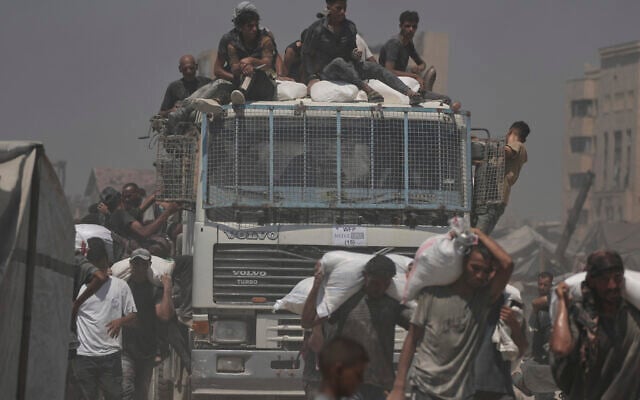
Farra said his hospital was now dealing with malnourished children with no previous health problems, like baby Wateen Abu Amounah, born healthy nearly three months ago and now weighing 100 grams less than she weighed at birth.
“During the past three months she did not gain one gram. On the contrary, the child’s weight decreased,” the doctor said.
“There is total loss of muscles. It’s only skin on top of bones, which is an indication that the child has entered a severe malnutrition phase,” said Farra. “Even the face of the child — she has lost fat tissues from her cheeks.”
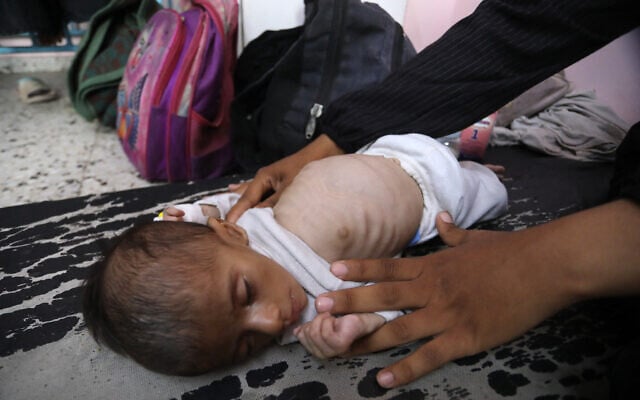
The baby’s mother, Yasmin Abu Sultan, gestured at the child’s limbs, her arms about as wide as her mother’s thumb.
“Can you see? These are her legs… Look at her arms,” she said.
The youngest babies in particular need special therapeutic formulas made with clean water, and supplies are running low, Farra and the WHO told Reuters.
“All the key supplies for the treatment of severe acute malnutrition, including medical complications, are really running out,” said Marina Adrianopoli, WHO nutrition lead for the Gaza response. “It’s really a critical situation.”
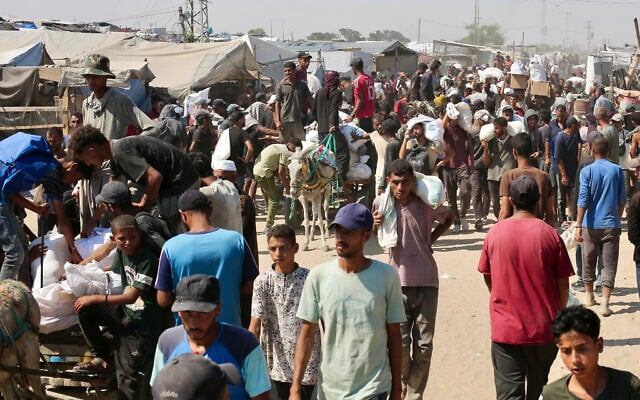
The treatment centers are also operating beyond capacity, she said. In the first two weeks of July, more than 5,000 children under five received outpatient treatment for malnutrition, with 18 percent suffering from the severest form. That was a surge from 6,500 in the whole of June, already the highest of the war and almost certainly an underestimate, said the WHO.
Seventy-three children with malnutrition and complications were hospitalized in July, up from 39 in June. Hospital places are scarce.
Baby Wateen’s mother said she tried to get the girl admitted last month, but the center was full. After 10 days with no milk available and barely a meal a day for the rest of the family, she returned last week because her daughter’s condition was deteriorating.
Like several of the infants at Nasser, Wateen also has a recurring fever and diarrhea, illnesses that malnourished children are more vulnerable to and which make their condition more dangerous.

“If she stays like this, I’m going to lose her,” her mother said.
Wateen remains in the hospital getting treatment, where her mother encourages her to take tiny sips from a bottle of formula milk. A side effect of severe malnutrition is, counterintuitively, loss of appetite, doctors told Reuters. Yasmin herself lives on the one meal a day provided by the hospital.
Some of the other babies Reuters met, like 10-month-old Maria, were discharged over the weekend after gaining weight and were given formula milk to take home with them.
But others, like five-month-old Zainab Abu Haleeb, did not make it. Vulnerable to infection because of her severely malnourished state, she died on Saturday of sepsis. Her parents carried her tiny body out of the hospital for burial, wrapped in a white shroud.
